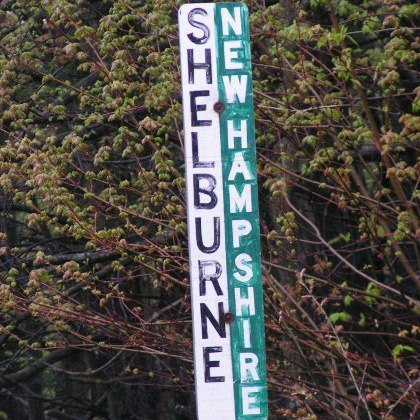History
First granted in 1769 by Governor John Wentworth, the town was named for William Petty Fitzmaurice, Earl of Shelburne. He was a supporter of independence for the American colonies, and at his insistence, King George III recognized the independence of the United States. The town was first settled in 1771, and incorporated on December 13, 1820, when Shelburne voters chose to keep the name. It included Shelburne Addition until that was set off and incorporated in 1836 as Gorham.
On August 3, 1781, the town was attacked by a party of six Indians, who had earlier raided Bethel and Gilead, Maine. They killed one man and took another into captivity. The rest of the inhabitants fled to Hark Hill, where they spent the night before sheltering in Fryeburg.
Shelburne provided excellent soil for farming on either side of the Androscoggin River, but not far from the stream it becomes mountainous. The Atlantic and St. Lawrence Railroad, which opened to Gorham on July 23, 1851, and later became the Grand Trunk Railway, passed through the southern part of the town. In 1859, the population was 480.
Located at the northern end of the Mount Washington Valley, Shelburne has a beautiful grove of birch trees, popular with artists and photographers, dedicated to the town’s soldiers who served in World War II.

World War ll Memorial
Founded 1769 Incorporated 1820
Population – Appr. 385 Geographical Size – Appr. 40 square miles Government – Town Meeting

Shelburne is a beautiful town, located at the Northern end of
the Mount Washington Valley. cheapest pedal kayak
